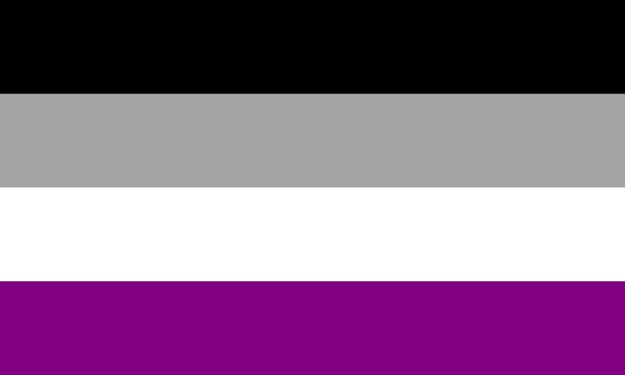History of the Aromantic and Queerplatonic Flags
A sequel to History of the Asexual Flag

Alright, I meant to write this back in February for Aromantic Spectrum Awareness Week, but I never actually ended up doing that because of, y’know, life. So here I am, half a year later with the history of the aromantic flag and the queerplatonic flag!
(The sequel to the History of the Asexual Flag I made nearly a year ago. I’m disappointed at how long it took me, too.)
The aromantic flag has a bit more of a complicated history than the asexual flag. The aromantic flag had three different widely used versions over the years. The first was green, orange, yellow, and black. No one knows who created it or when it was made, though the meaning of the stripes survived. The green is for aromantics, since it’s the opposite of red, the colour associated with love; yellow is for friendship, since yellow roses mean friendship in the language of flowers; orange, since it’s the colour between red and yellow, is for the aromantic spectrum and how it’s between romance and friendship; and black for alloromantics who reject the amatonormative and allonormative ideals of love. Debate surrounding the flag arose though for several reasons. One was that the first aromantic flag was too close to the Rastafarian flag, which was starting to cause confusion. Another reason was that the colour scheme was straining on the eyes. The final reason was around the black stripe since it was for alloromantics who, even if they did reject amatonormativity and allonormativity, are not part of the aromantic spectrum.
So the arospec community decided it was time for a change. In February of 2014, tumblr user Cameron Whimsy created the second version that’s dark green, light green, yellow, grey, and black. The green stripes meant arospecs, the yellow meant platonic and aesthetic attraction, and the grey and black represented the different sexualities within the community. After receiving some feedback, Whimsy redesigned the flag in August of that year because 1) the yellow was causing sensory issues for some people and 2) the colour scheme was also the same as the Jamaican, which was causing confusion. The yellow became white, and the meanings stayed the same. This is now the flag that’s recognised as the aromantic flag, and is widely used among the community.
You can see the colour scheme reflected in many of the other arospec flags, just like how the asexual flag’s colour scheme is reflected in other acespec flags. Both the greyromantic and the demiromantic flags share the colours of the aromantic flag (though the greyromantic flag doesn’t have a black stripe). This can also be seen in the colour scheme for the queerplatonic flag.
“Queerplatonic” means a relationship that is neither romantic or platonic—it’s not strictly an arospec term, though it’s mostly used by the community. There are two widely used queerplatonic flags: one has seven stripes and is pink, black, grey, white, grey, black, and pink with a yellow heart in the center. The other most widely used flag is yellow, pink, white, grey, and black. As far as I’m aware, the colours stand for the same things both flags; there’s conflicting information about who created the flags or which one was first—most say Tumblr user pride-flags-for-us created the first one mentioned, but the post no longer exists, so it’s hard to confirm. There are known meanings for yellow and pink stripes: yellow means platonic attraction, just like how the yellow in the previous aromantic flags were used, pink was chosen because “it’s lighter than red, which stands for romantic attraction” (pride-color-schemes) but is still different from red, which is quite symbolic of queerplatonic relationships. There isn’t a confirmed meaning behind the black, white, and grey stripes, though it’s speculated that these colours were chosen to resemble the aromantic flag and represents the aromantic spectrum.
Anyways, that’s the long overdue history of both these flags! If you’re hoping I’ll make another post about flag history—I might, one day, eventually. But I wouldn’t hold my breath.
About the Creator
Christian Bellmore
they/them
Linktree: https://linktr.ee/wish_ful_thinking
Enjoyed the story? Support the Creator.
Subscribe for free to receive all their stories in your feed. You could also pledge your support or give them a one-off tip, letting them know you appreciate their work.






Comments
There are no comments for this story
Be the first to respond and start the conversation.